The First Islamic Arts Biennale “a Journey from Darkness to Light”
The first exhibition of the Islamic Arts Biennale was held at the West Hajj Terminal at King Abdulaziz International Airport in Jeddah. OMA was chosen as the designer for this event which lasted for three months, from January 23 to April 23, 2023. The grand exhibition featured about 120,000 square meters of exhibition space and was themed Awwal Bayt (First House). The exhibition aims to showcase works of art, Islamic cultural creativity, and a blend of tradition and modernity.
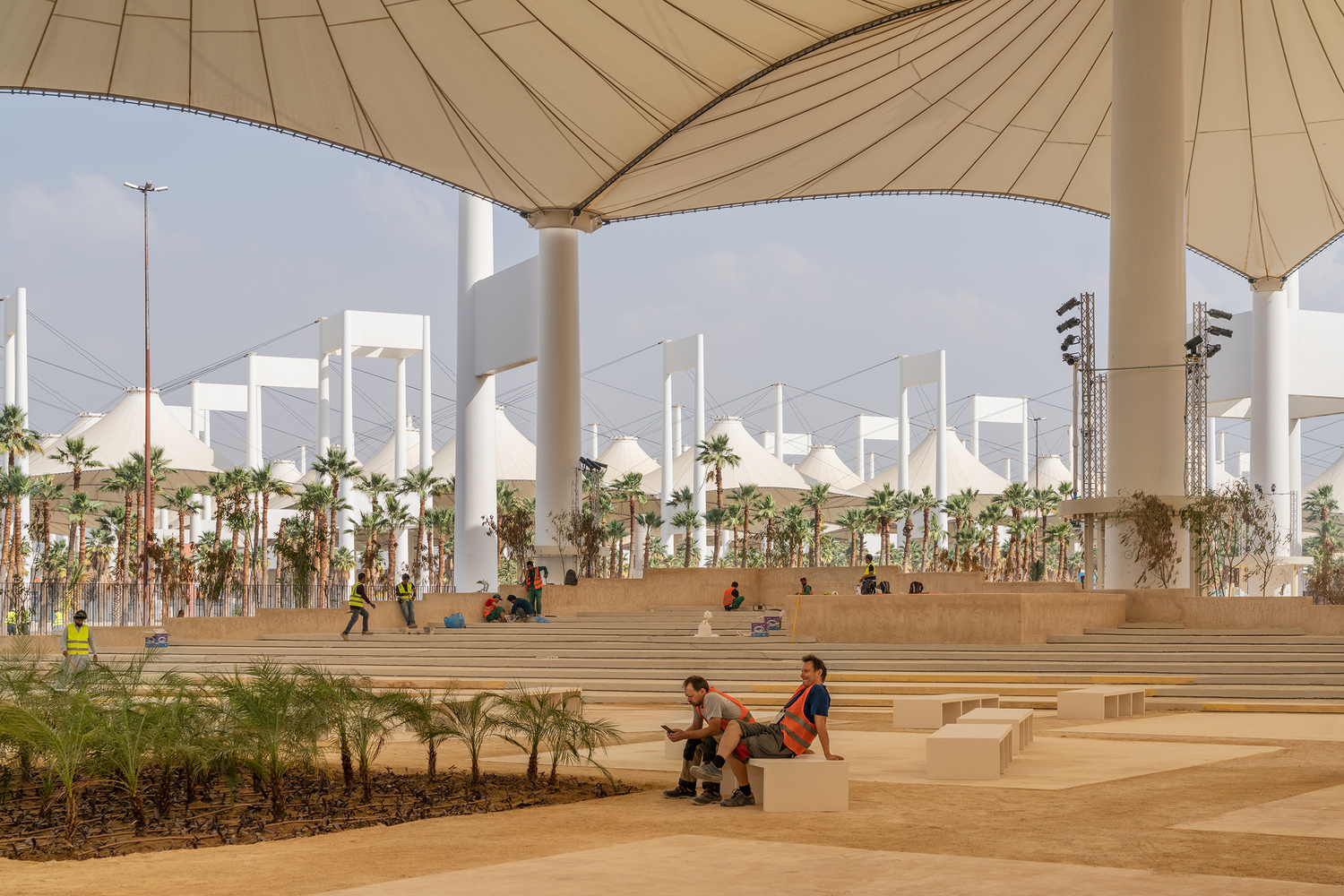 Islamic Art Biennale Held in Western Hajj Terminal at Jeddah Airport, photo by Marco Cappelletti
Islamic Art Biennale Held in Western Hajj Terminal at Jeddah Airport, photo by Marco Cappelletti
It features more than 280 works of historic Islamic objects and 60 new contemporary artworks created by 44 artists from various countries, 18 of whom are from Saudi Arabia. The Islamic Art Biennale is divided into two different areas. The first area is an indoor gallery focused on the direction of Muslims when praying (qibla). The room is designed with a dark atmosphere applying the color of the walls and black ceiling, giving a prominent impression to the work on display. Visitors will feel the ritualistic and meditative effect when they enter the space.
"More than 200 ancient objects are on display, some of which have never been seen by the wider public. In addition, there are works of art by contemporary artists from Saudi Arabia and other countries in the Middle East and North Africa to countries such as the United Kingdom and South Africa, giving a new dimension to timeless Islamic rituals," said Iyad Alsaka, as OMA partner.
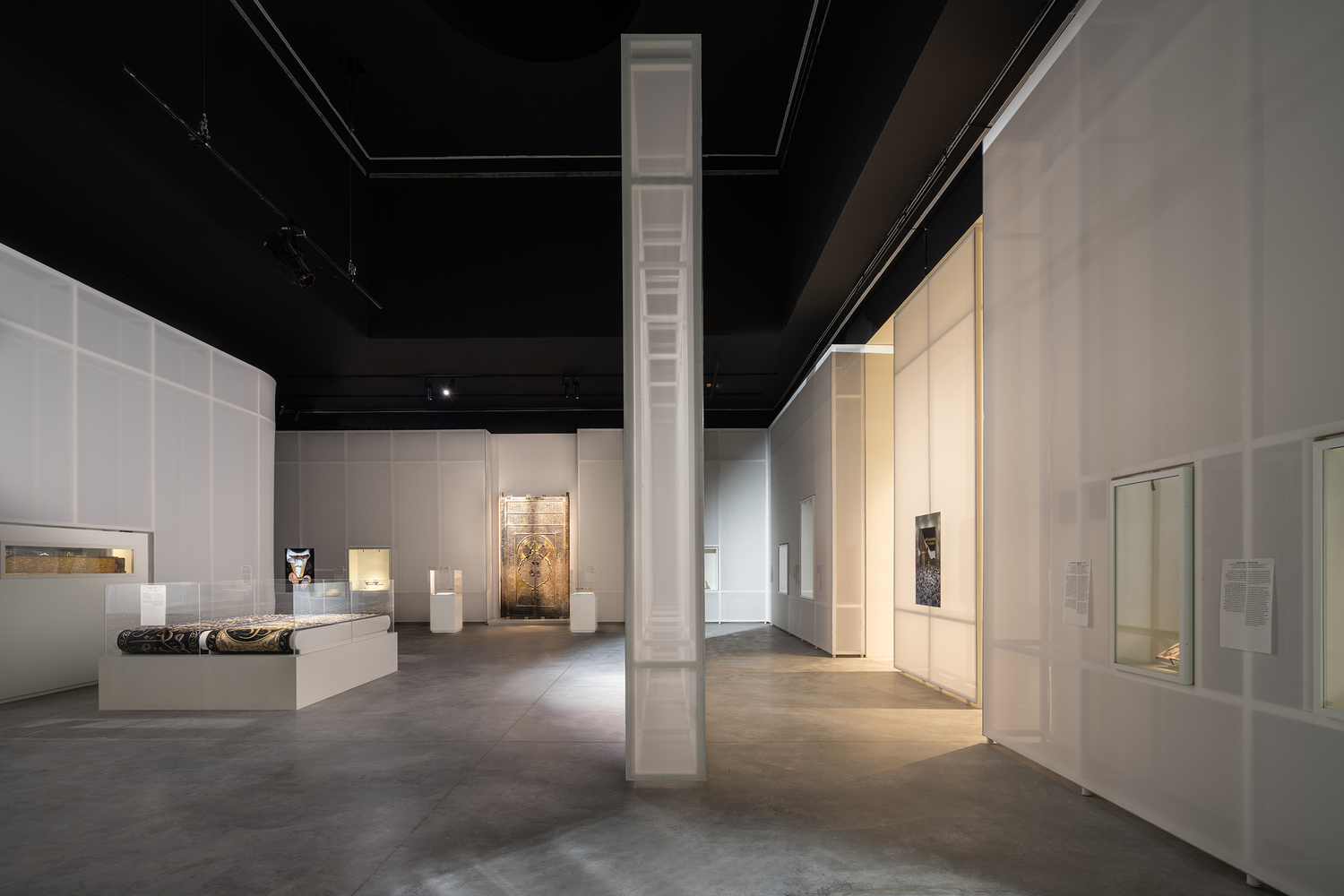 Installation View on the First Islamic Arts Biennale in Jeddah, photo by Marco Cappelletti
Installation View on the First Islamic Arts Biennale in Jeddah, photo by Marco Cappelletti
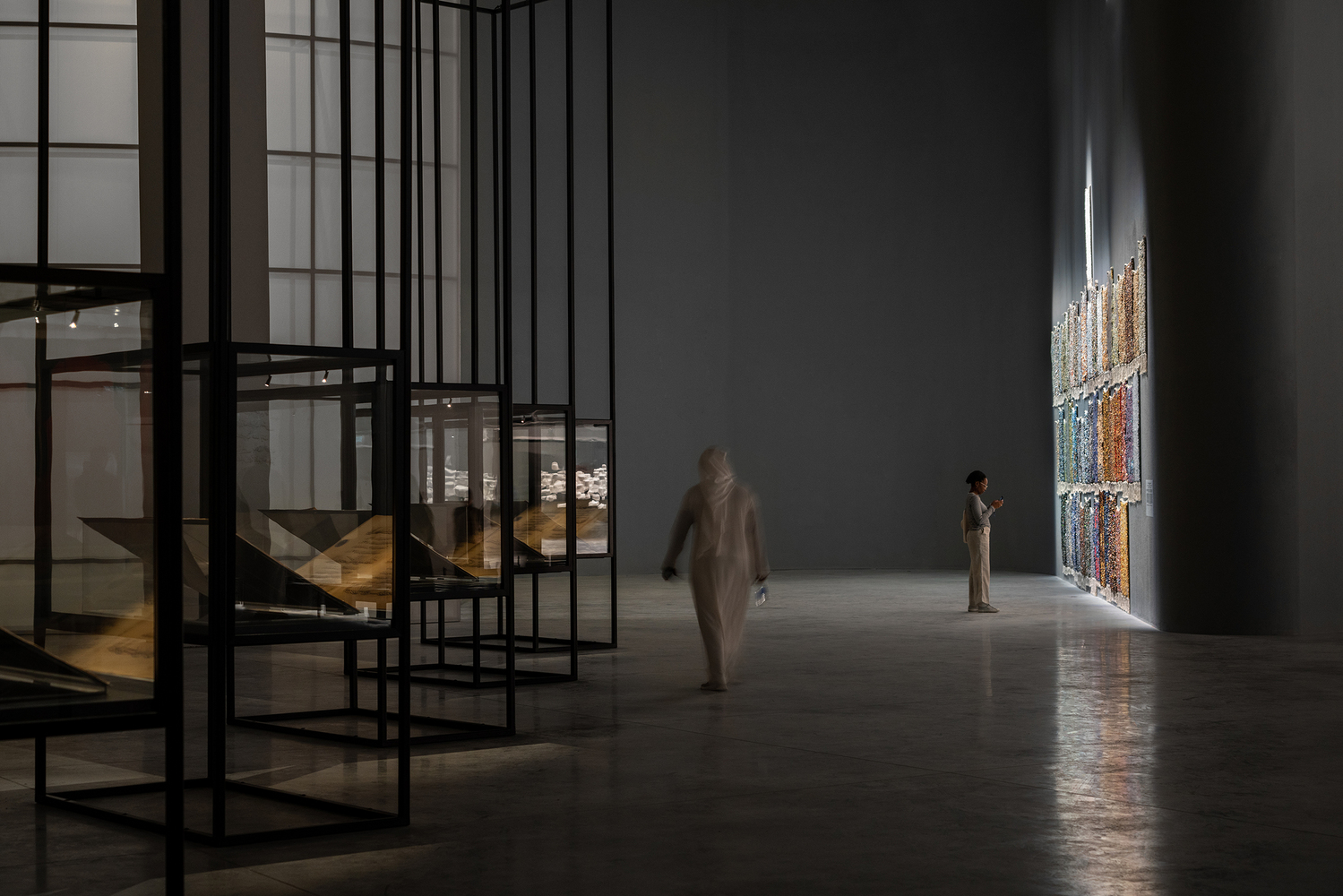 The Atmosphere of Indoor Exhibition Hall, photo by Marco Cappelletti
The Atmosphere of Indoor Exhibition Hall, photo by Marco Cappelletti
In line with the chosen color palette, the layout of this exhibition hall is like on the way from darkness to light, starting from a dimly lit room filled with 17th-century astrolabe used to count the qibla and ending with a bright room that houses an installation incorporating the First Saudi Door of the Kaaba in Makkah, installed during the reign of King Abdul Aziz. In designing this space program, OMA divided the exhibition hall into several parts with different visual impressions. All exhibition halls are designed to have uniqueness, with art installations being a point of interest and dramatic lighting.
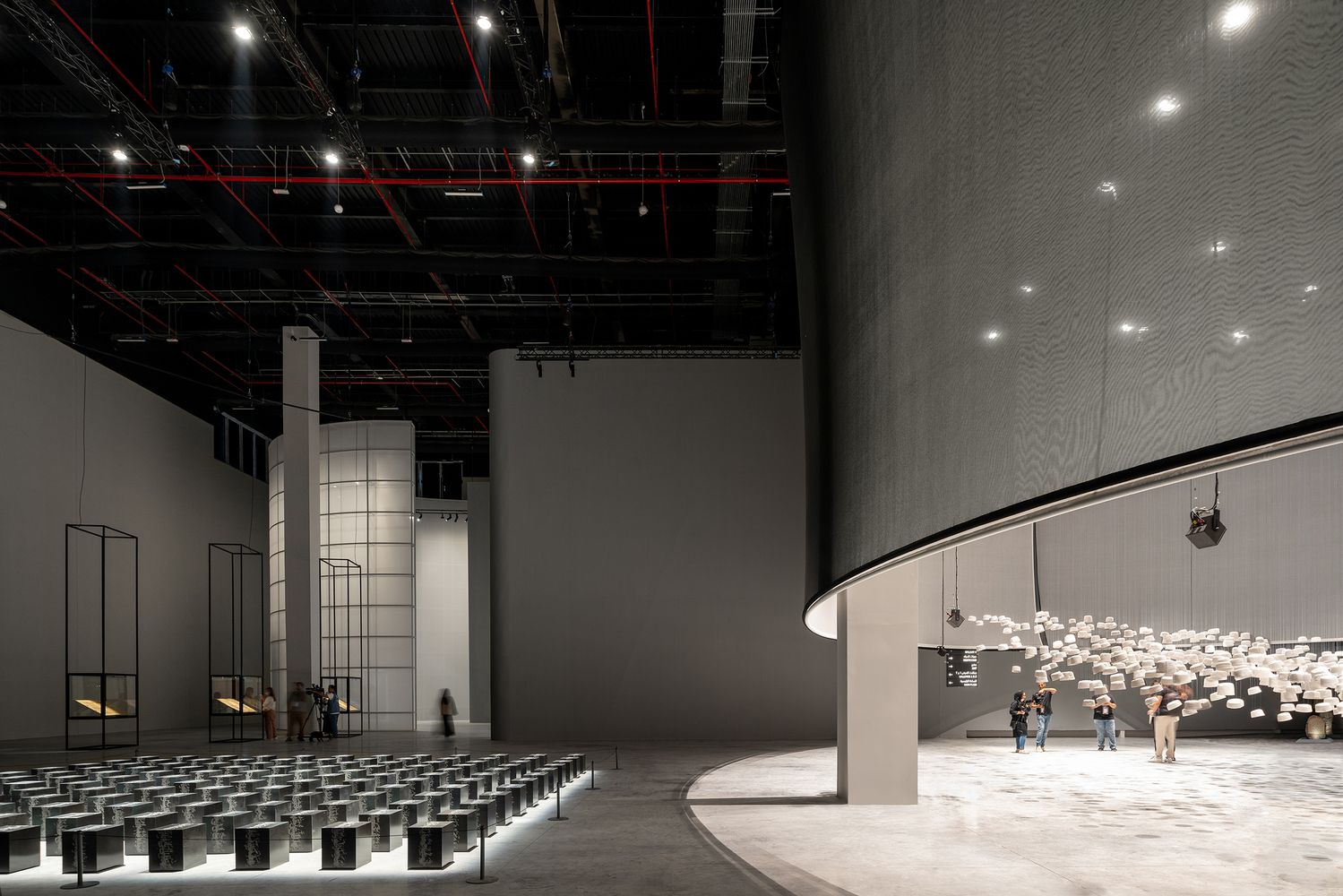 Unique Lighting Applied in Exhibition Hall, photo by Marco Cappelletti
Unique Lighting Applied in Exhibition Hall, photo by Marco Cappelletti
One of the artworks on display indoors is Haroon Gunn-Salie's "Amongst Men" from South Africa. The artwork consists of 1000 white hats representing African and Asian Muslim male mourners. The installation was created to pay tribute to South African imam Abdullah Haron at the funeral of 40,000 freedom fighters who opposed apartheid-based violence after Haron was arrested and beaten to death by Cape Town police in 1969.
 Installation View of Amongst Men by Haroon Gunn-Salie, courtesy of Diriyah Biennale Foundation
Installation View of Amongst Men by Haroon Gunn-Salie, courtesy of Diriyah Biennale Foundation
The second area is outdoor, focused on landscape areas that look like deserts, hinting at the Prophet Muhammad's hijra journey from Mecca to Medina. It is equipped with two pavilions (Mecca and Medina), an outdoor area under the canopy of the Hajj Terminal, and is used to display artwork. The exhibitions in both pavilions, surrounded by translucent screen walls, are visited by many people.
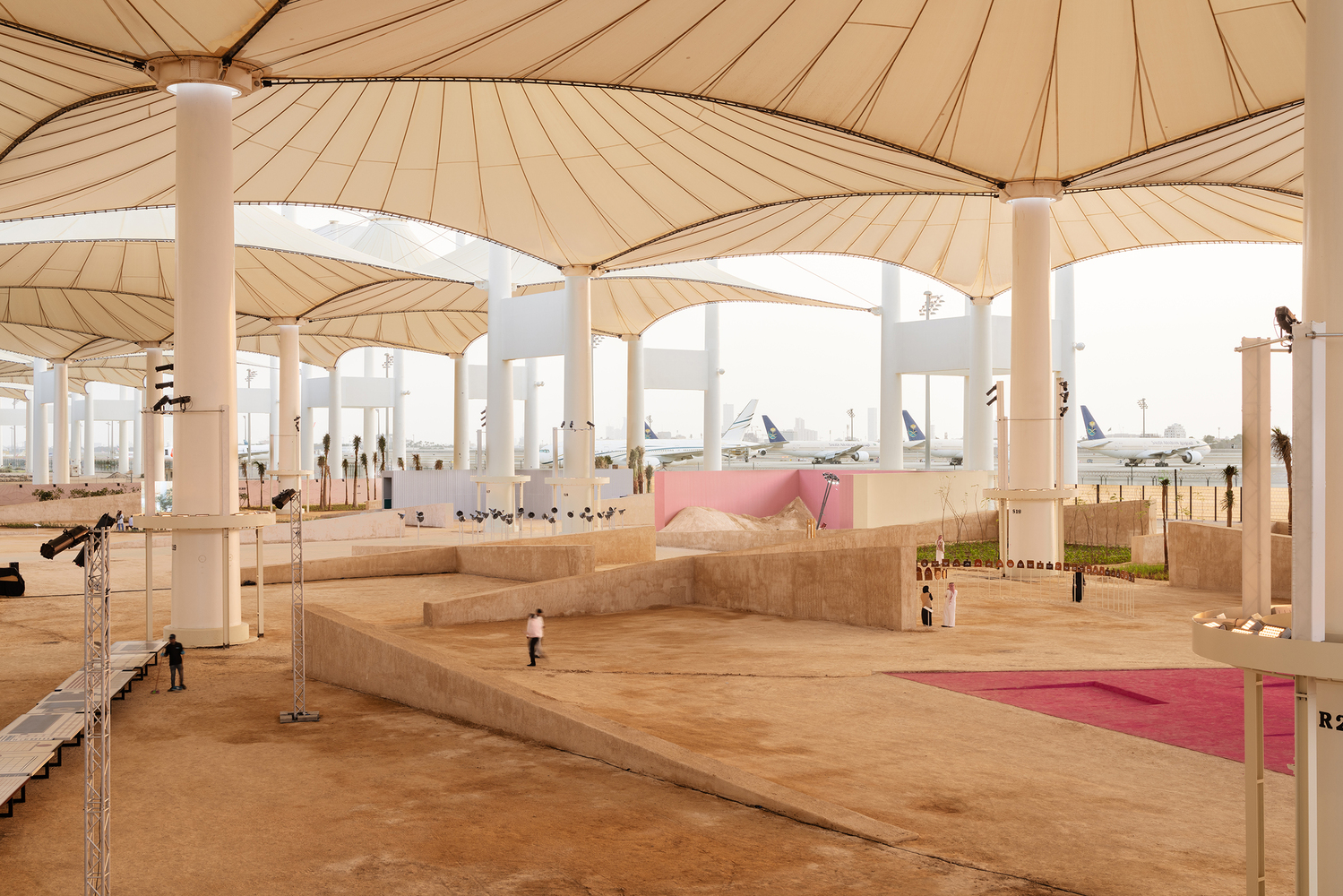 A Desert-like Landscape of Islamic Arts Biennale, photo by Marco Cappelletti
A Desert-like Landscape of Islamic Arts Biennale, photo by Marco Cappelletti
 Outdoor Area of Islamic Arts Biennale in Jeddah, photo by Marco Cappelletti
Outdoor Area of Islamic Arts Biennale in Jeddah, photo by Marco Cappelletti
Among the artworks on display in the outdoor area under the canopy is the work of Egyptian Wael Shawky from childhood memories of the open plains near Mecca. This artwork is in the form of three steel lamp posts leaning against the ground at a certain angle. Then the work "Guarding the Holy'' by Dima Srouji of Palestinian origin derived from the tinted glass shards put together, replicas of 30 windows that were destroyed at the Dome of the Rock and the Al-Aqsa Mosque during the Israeli invasion of Jerusalem on April 15, 2022.
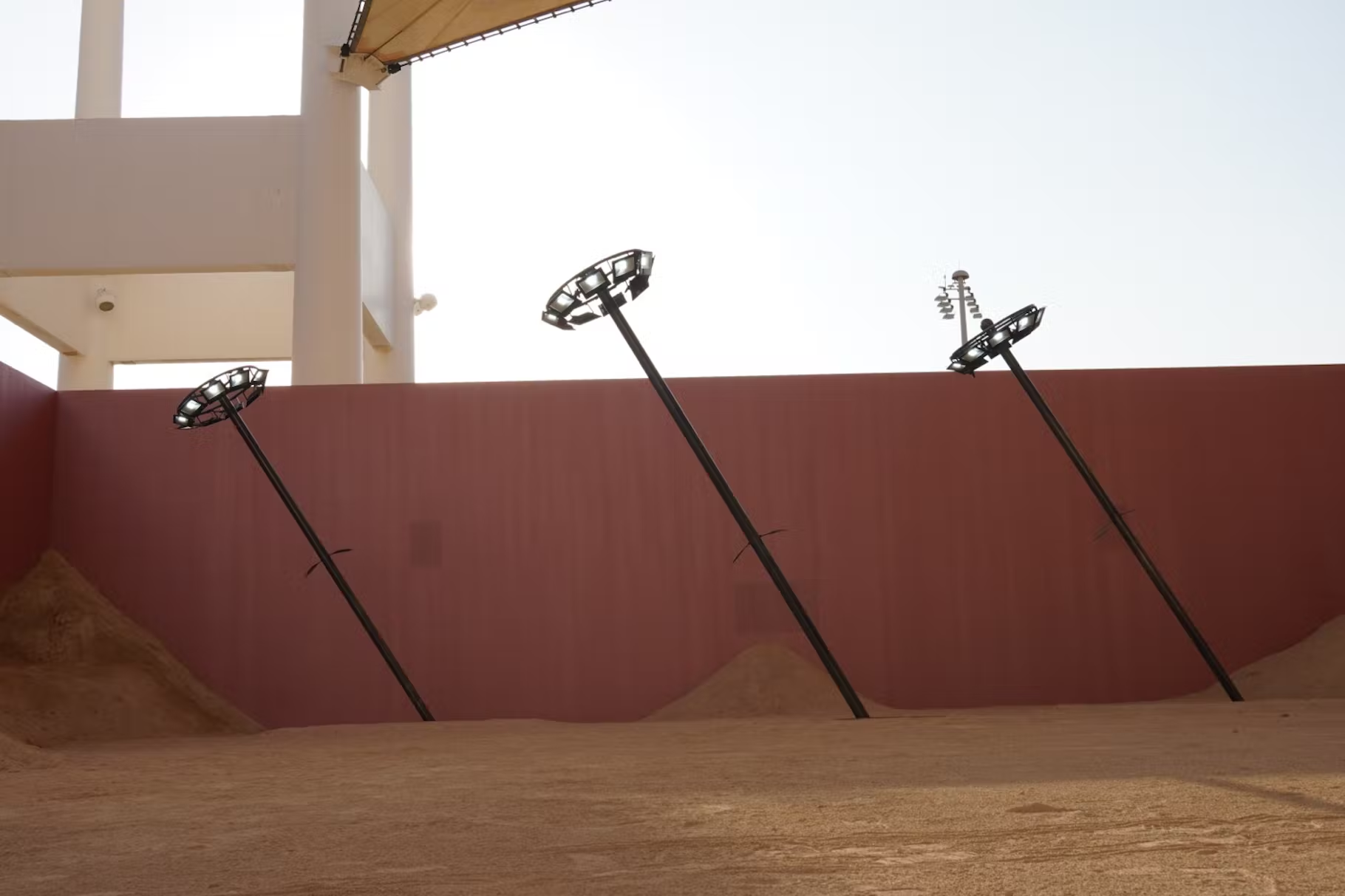 Installation by Wael Sawky, courtesy of Diriyah Biennale Foundation
Installation by Wael Sawky, courtesy of Diriyah Biennale Foundation
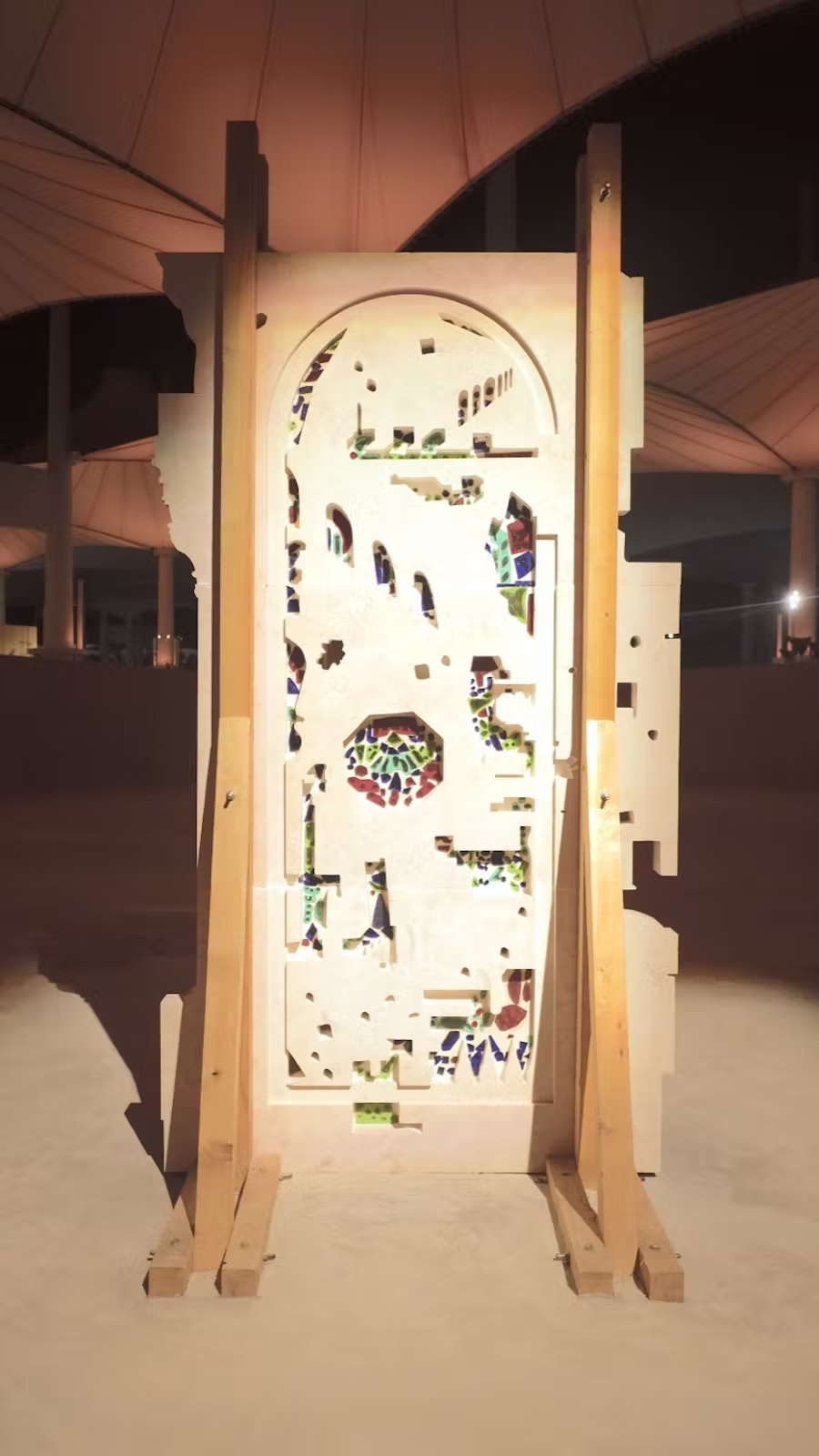
Installation by Dima Srouji, photo by Sueraya Shaheen
The Islamic Arts Biennale is more than just an exhibition for artwork. It presents an opportunity to broaden horizons, inspire, and open new perspectives on Islamic art. The event was successfully organized by the Diriyah Biennale Foundation (DBF), established in 2020 by the Saudi Ministry of Culture. The Foundation will host a yearly biennale, alternating between the Contemporary Art Biennale and the Islamic Art Biennale.

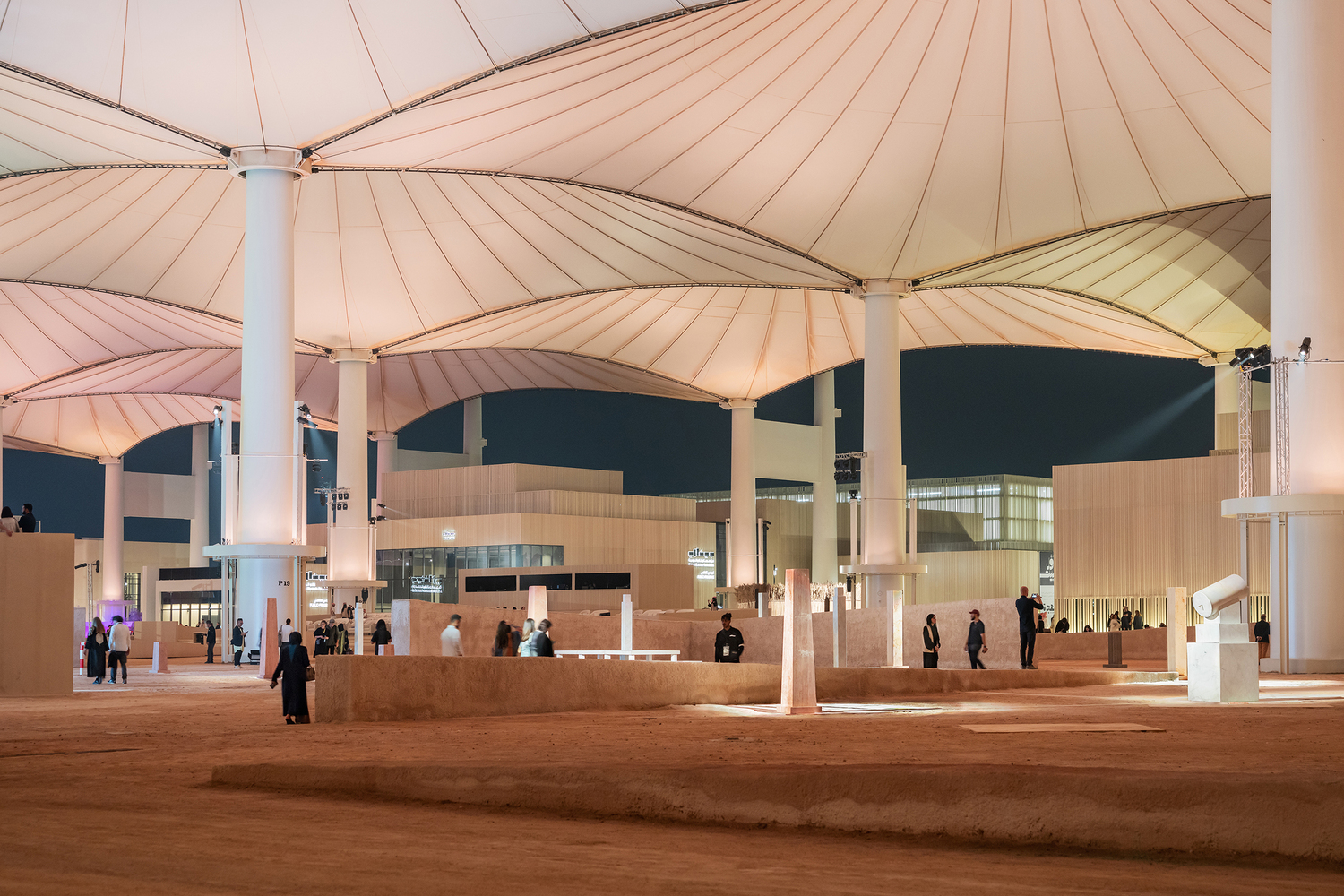





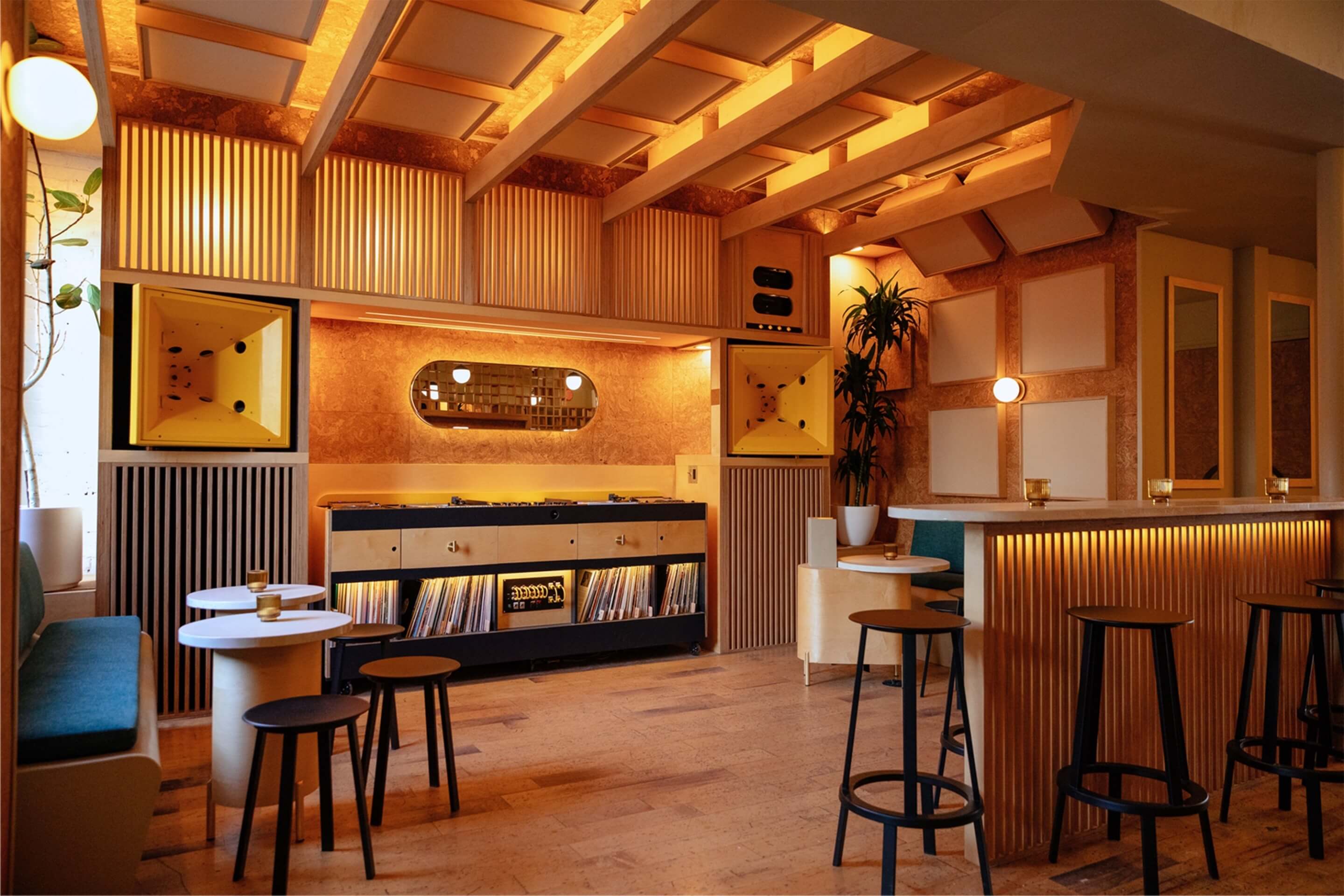

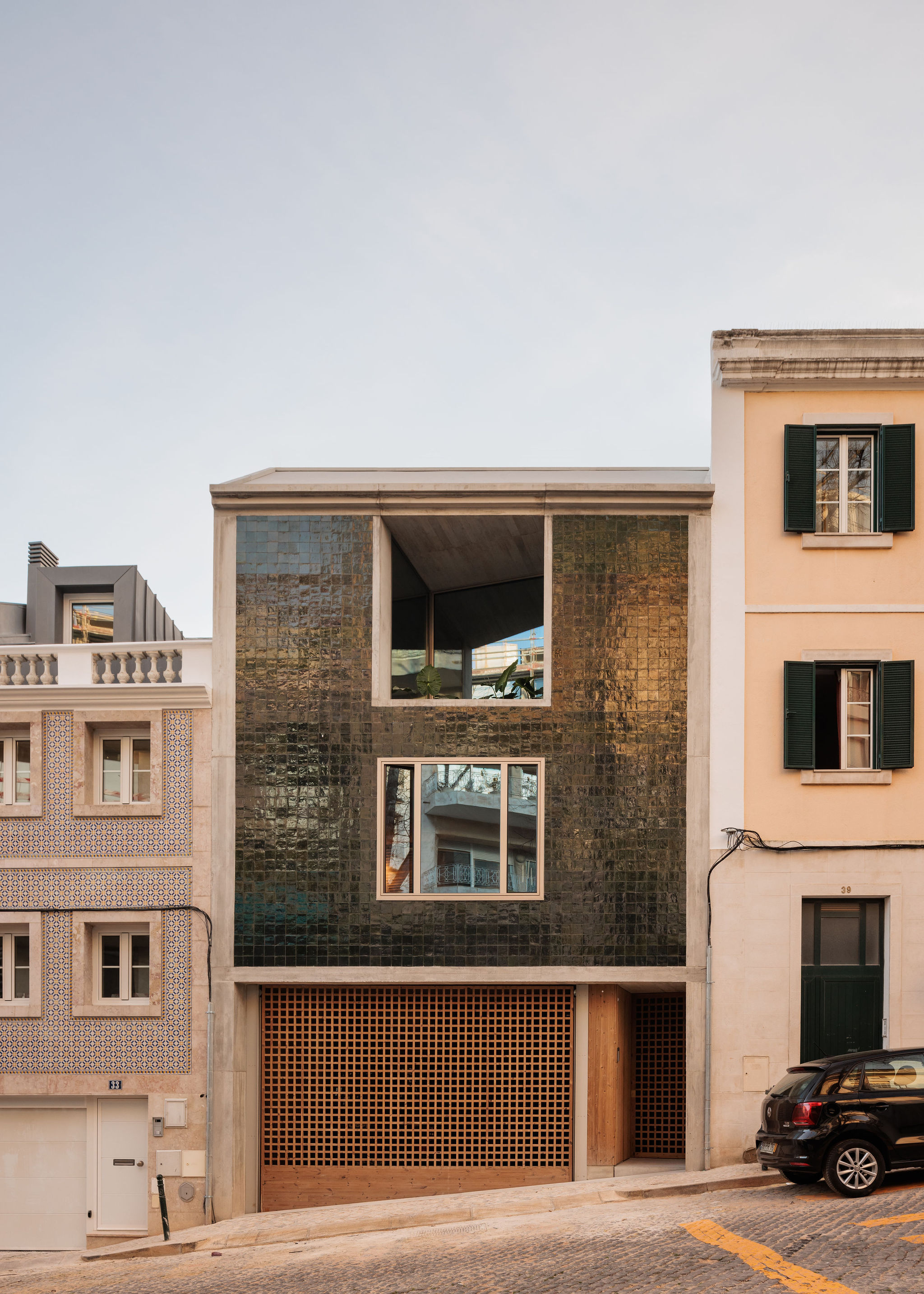
Authentication required
You must log in to post a comment.
Log in